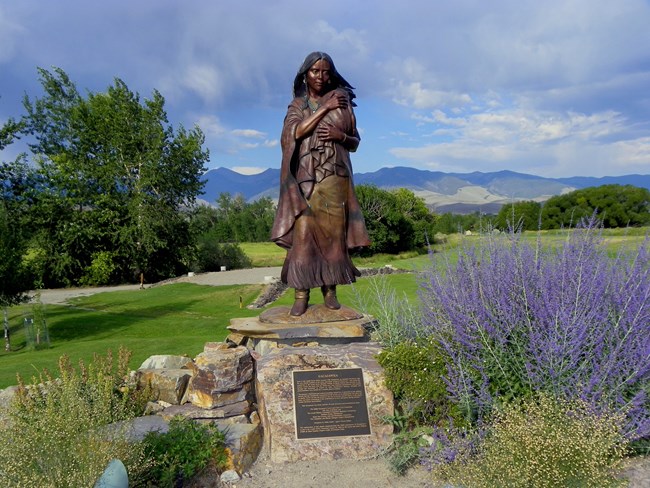In Salmon, Idaho, a statue commemorates a well-known Native American woman: Sacajawea. Born to the Lemhi Shoshone, but raised by the Hidatsa, Sacajawea is known in American history as the woman who guided the Corps of Discovery (led by Meriweather Lewis and William Clark) across what is now the United States, helping to reach the Pacific Ocean and chart the nation for the first time.
But Sacajawea wasn’t quite a woman when the journey started. Born in 1788, Sacajawea was 16 years old when she joined the expedition. She was a girl. Granted, in the early 1800s, the late teens were often considered adulthood. Sacajawea had already gained a diversity of skills that would help her on the journey: being raised in Missouri near French explorers and fur trappers (one of whom she married), she knew French, diplomacy, geography, and was familiar with tribes west of Missouri.
Sacajawea’s skills proved vital to the success of Corps’ expedition, so much so that her statue in Salmon, Idaho, is considered one of the historic treasures in Exploring American Girlhood in 50 Historic Treasures. Just 16 and several months pregnant when the journey started, our chapter recounts how Sacajawea’s skills helped communicate with tribes, secure horses to ensure passage across the Rocky Mountains, and ensure the explorers didn’t often misstep in their diplomatic efforts. While rarely mentioned in the Corps’ records, her importance was evidenced by one entry by Meriweather Lewis:
This changes on August 25, 1805, when Sacajawea was integral to alerting Lewis and Clark to impending doom. After discovering that Shoshone men dispatched to help the expedition intend to leave them stranded in the mountains, Sacajawea alerted the party and prevented the Corps from being stranded without horses as winter approached. Following this, their tone towards Sacajawea changes. In October, Clark described her as vital to “our friendly relations” with Native Americans. Sacajawea’s growing agency is further evidenced on January 6, 1806, when she successfully convinced Clark to allow her to accompany them in seeing a beached whale at Tillamook Head, having finally reached the Pacific Coast.
Exploring American Girlhood in 50 Historic Treasures
As we commemorate the 215th anniversary of Lewis and Clark returning from their journey, it’s important to recognize that without Sacajawea – a 16-year-old girl who, over the course of two years, was integral to their success while birthing and raising her first child – the Corps simply would not have survived the journey. She helped secure supplies, guide them across unknown (to them) territory, negotiate and ensure peace with tribes they encountered, and ultimately reach the Pacific Ocean while documenting the people, animals, and lands they encountered. Though we have very little beyond the Corps’ observations about Sacajawea, she is surely the one we should be commemorating today.
-Tiffany Isselhardt
Program Developer
Co-Author, Exploring American Girlhood in 50 Historic Treasures (Amazon)

